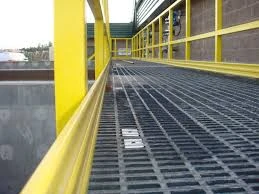
-
 Afrikaans
Afrikaans -
 Albanian
Albanian -
 Amharic
Amharic -
 Arabic
Arabic -
 Armenian
Armenian -
 Azerbaijani
Azerbaijani -
 Basque
Basque -
 Belarusian
Belarusian -
 Bengali
Bengali -
 Bosnian
Bosnian -
 Bulgarian
Bulgarian -
 Catalan
Catalan -
 Cebuano
Cebuano -
 China
China -
 China (Taiwan)
China (Taiwan) -
 Corsican
Corsican -
 Croatian
Croatian -
 Czech
Czech -
 Danish
Danish -
 Dutch
Dutch -
 English
English -
 Esperanto
Esperanto -
 Estonian
Estonian -
 Finnish
Finnish -
 French
French -
 Frisian
Frisian -
 Galician
Galician -
 Georgian
Georgian -
 German
German -
 Greek
Greek -
 Gujarati
Gujarati -
 Haitian Creole
Haitian Creole -
 hausa
hausa -
 hawaiian
hawaiian -
 Hebrew
Hebrew -
 Hindi
Hindi -
 Miao
Miao -
 Hungarian
Hungarian -
 Icelandic
Icelandic -
 igbo
igbo -
 Indonesian
Indonesian -
 irish
irish -
 Italian
Italian -
 Japanese
Japanese -
 Javanese
Javanese -
 Kannada
Kannada -
 kazakh
kazakh -
 Khmer
Khmer -
 Rwandese
Rwandese -
 Korean
Korean -
 Kurdish
Kurdish -
 Kyrgyz
Kyrgyz -
 Lao
Lao -
 Latin
Latin -
 Latvian
Latvian -
 Lithuanian
Lithuanian -
 Luxembourgish
Luxembourgish -
 Macedonian
Macedonian -
 Malgashi
Malgashi -
 Malay
Malay -
 Malayalam
Malayalam -
 Maltese
Maltese -
 Maori
Maori -
 Marathi
Marathi -
 Mongolian
Mongolian -
 Myanmar
Myanmar -
 Nepali
Nepali -
 Norwegian
Norwegian -
 Norwegian
Norwegian -
 Occitan
Occitan -
 Pashto
Pashto -
 Persian
Persian -
 Polish
Polish -
 Portuguese
Portuguese -
 Punjabi
Punjabi -
 Romanian
Romanian -
 Russian
Russian -
 Samoan
Samoan -
 Scottish Gaelic
Scottish Gaelic -
 Serbian
Serbian -
 Sesotho
Sesotho -
 Shona
Shona -
 Sindhi
Sindhi -
 Sinhala
Sinhala -
 Slovak
Slovak -
 Slovenian
Slovenian -
 Somali
Somali -
 Spanish
Spanish -
 Sundanese
Sundanese -
 Swahili
Swahili -
 Swedish
Swedish -
 Tagalog
Tagalog -
 Tajik
Tajik -
 Tamil
Tamil -
 Tatar
Tatar -
 Telugu
Telugu -
 Thai
Thai -
 Turkish
Turkish -
 Turkmen
Turkmen -
 Ukrainian
Ukrainian -
 Urdu
Urdu -
 Uighur
Uighur -
 Uzbek
Uzbek -
 Vietnamese
Vietnamese -
 Welsh
Welsh -
 Bantu
Bantu -
 Yiddish
Yiddish -
 Yoruba
Yoruba -
 Zulu
Zulu
Fiberglass Grid Solutions for Strength and Durability
The Versatility of Fiberglass Grid A Comprehensive Overview
Fiberglass grid, also known as fiberglass reinforced plastic (FRP) grid, has become an indispensable material across various industries due to its unique properties, including strength, durability, and resistance to corrosive environments. This article explores the characteristics, applications, and advantages of fiberglass grid, highlighting why it is a preferred choice for many construction and industrial projects.
What is Fiberglass Grid?
Fiberglass grid is a composite material made from fiberglass, resin, and a grid structure that provides additional strength and stability. It is engineered to withstand heavy loads and is often used in applications where traditional materials like metal or wood may fail due to environmental factors. The combination of lightweight and high strength makes fiberglass grid an ideal solution for applications requiring robust support yet easy handling.
Key Characteristics
One of the most compelling characteristics of fiberglass grid is its remarkable corrosion resistance. Unlike steel, which can rust and deteriorate in damp environments, fiberglass grid is impervious to moisture, chemicals, and UV radiation. This property makes it suitable for a wide variety of applications, including those in chemical processing, waste management, and marine environments.
Another notable feature is its lightweight nature. Fiberglass grid is significantly lighter than conventional materials, making it more manageable and cost-effective during transportation and installation. This lightweight aspect also contributes to reduced structural loads, thus minimizing the necessary foundation supports.
Additionally, fiberglass grid can be manufactured in various shapes and sizes, providing flexibility in design and application. It can be molded into complex forms, making it a versatile choice for various construction projects.
Applications of Fiberglass Grid
fiberglass grid

The applications of fiberglass grid are vast and diverse. In the construction industry, they are commonly used for flooring, walkways, and slip-resistant surfaces. Their durability and ability to support heavy loads make them ideal for factory floors, mezzanines, and platforms.
In the municipal sector, fiberglass grids are increasingly used in wastewater treatment plants, where their resistance to chemicals and ease of maintenance are paramount. Furthermore, they are often utilized in environmental engineering for ground stabilization and erosion control.
In the marine industry, fiberglass grid is favored for applications such as docks and boat ramps, as it withstands harsh environmental conditions without deteriorating. The non-slip surface is particularly beneficial for safety in wet conditions.
Advantages of Using Fiberglass Grid
The advantages of fiberglass grid extend beyond its physical properties. Its corrosion resistance and durability translate to lower maintenance costs over time. Since it does not require painting or coatings, long-term expenditures are minimized.
Moreover, the installation of fiberglass grids often leads to faster project completion times due to their lightweight nature and ease of handling. Additionally, they contribute to sustainability efforts; being recyclable, fiberglass grids can minimize the environmental footprint of construction projects.
Conclusion
In summary, fiberglass grid stands out as a versatile and durable material suitable for a multitude of applications. Its resistance to corrosion, lightweight properties, and flexibility in design make it an attractive choice for various industries. As demand for sustainable and cost-effective solutions continues to rise, fiberglass grid is likely to play an even more pivotal role in future construction and industrial projects, paving the way for innovative applications that enhance safety, efficiency, and environmental stewardship.









